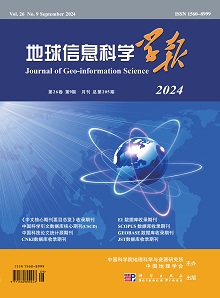利用以前的土地覆盖数据自动选择分类样本
引用次数: 0
摘要
地理知识与影像定标相结合一直是遥感制图中传统的目视解译和计算机自动分类的主要手段。传统的视觉解说由于人工参与,能够很好地利用地理知识。然而,它的缺点是视觉解释需要大量的劳动力,效率较低。此外,计算机分类并没有很好地应用地理知识。研究表明,样本作为地理知识的载体,在一定程度上可以将地理知识融入到分类过程中。同时,无监督聚类可以显著提高样本选择的效率,解决样本稀缺的问题,以满足分布和纯度的要求。这些研究为地理知识与计算机分类的整合提供了基础。本文提出了一种将图像聚类与以往土地覆盖数据相结合的自动采样方法。根据上述方法自动选取TM图像中的样本,然后使用最大似然分类器对图像进行分类。我们还使用最大似然分类器对人工样本的图像进行分类,以比较两种样本的分类结果。试验结果表明,该方法在水体、林地、果园和城市建设用地7个分类中,总体精度为84.18%,kappa系数为0.8066。本文提出的方法比人工选择样本的方法效率更高,分类效果更好。本文章由计算机程序翻译,如有差异,请以英文原文为准。
Automatic Selection of Classified Samples with the Help of Previous Land Cover Data
The combination of geographical knowledge and image calibration has long been the principal means of both the traditional visual interpretation and computer automatic classification in remote sensing mapping.Traditional visual interpretation could use the geographic knowledge well because of the artificial participation.However,it goes with the shortcomings that visual interpretation needs a lot of labor and is less efficient.In addition,the computer classification has not applied geographic knowledge in a proper way.Studies have shown that samples as the carrier of geographic knowledge can integrate geographic knowledge into the classification process to some extent.Meanwhile,unsupervised clustering can significantly improve the efficiency of sample selection and solve the problem of scarcity of samples in order to meet the requirement of distribution and purity.These studies provide a basic foundation for integration of geographic knowledge with computer classification.This paper presents an automatic sample selecting method which integrates image clustering with the aid of previous land cover data.The samples were selected automatically based on the TM images by the method mentioned above and used to classify the image later by the maximum likelihood classifier.We also classified the image using the manual samples by the maximum likelihood classifier in order to compare the classified results produced by these two kinds of samples.The test results indicated that the proposed method achieved an overall accuracy of 84.18% and a kappa coefficient of 0.8066 in seven categories,including water body,forest land,orchard and urban construction land.The method proposed in this paper is more efficient than the way of samples selected manually and provides better classification results.
求助全文
通过发布文献求助,成功后即可免费获取论文全文。
去求助
来源期刊
CiteScore
2.70
自引率
0.00%
发文量
3757
期刊介绍:
Journal of Geo-Information Science is an academic journal under the supervision of Chinese Academy of Sciences, jointly sponsored by Institute of Geographic Sciences and Resources, Chinese Academy of Sciences and Chinese Geographical Society, and also co-sponsored by State Key Laboratory of Resource and Environmental Information System, Key Laboratory of Virtual Geographic Environment of Ministry of Education and Key Laboratory of 3D Information Acquisition and Application of Ministry of Education. Founded in 1996, it is openly circulated in the form of a monthly magazine.
Journal of Geoinformation Science focuses on publishing academic papers with geographic system information flow as the main research object, covering research topics such as geographic information cognitive theory, geospatial big data mining, geospatial intelligent analysis, etc., and pays special attention to the innovative results of theoretical methods in geoinformation science. The journal is aimed at scientific researchers, engineers and decision makers in the fields of cartography and GIS, remote sensing science, surveying and mapping science and technology. It is a core journal of China Science Citation Database (CSCD), a core journal of Chinese science and technology, a national Chinese core journal in domestic and international databases, and it is included in international databases, such as EI Compendex, Geobase, and Scopus.

 求助内容:
求助内容: 应助结果提醒方式:
应助结果提醒方式:


